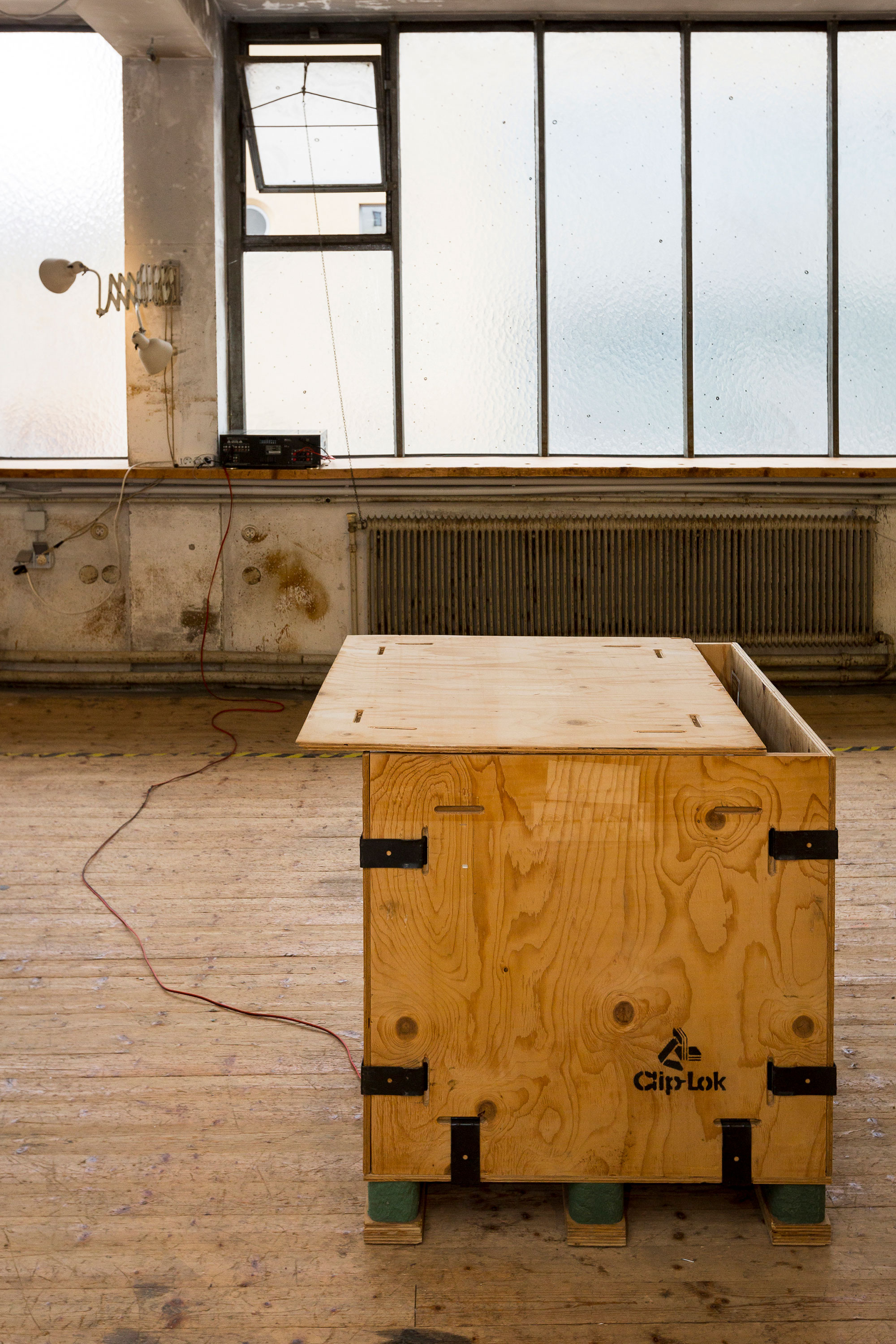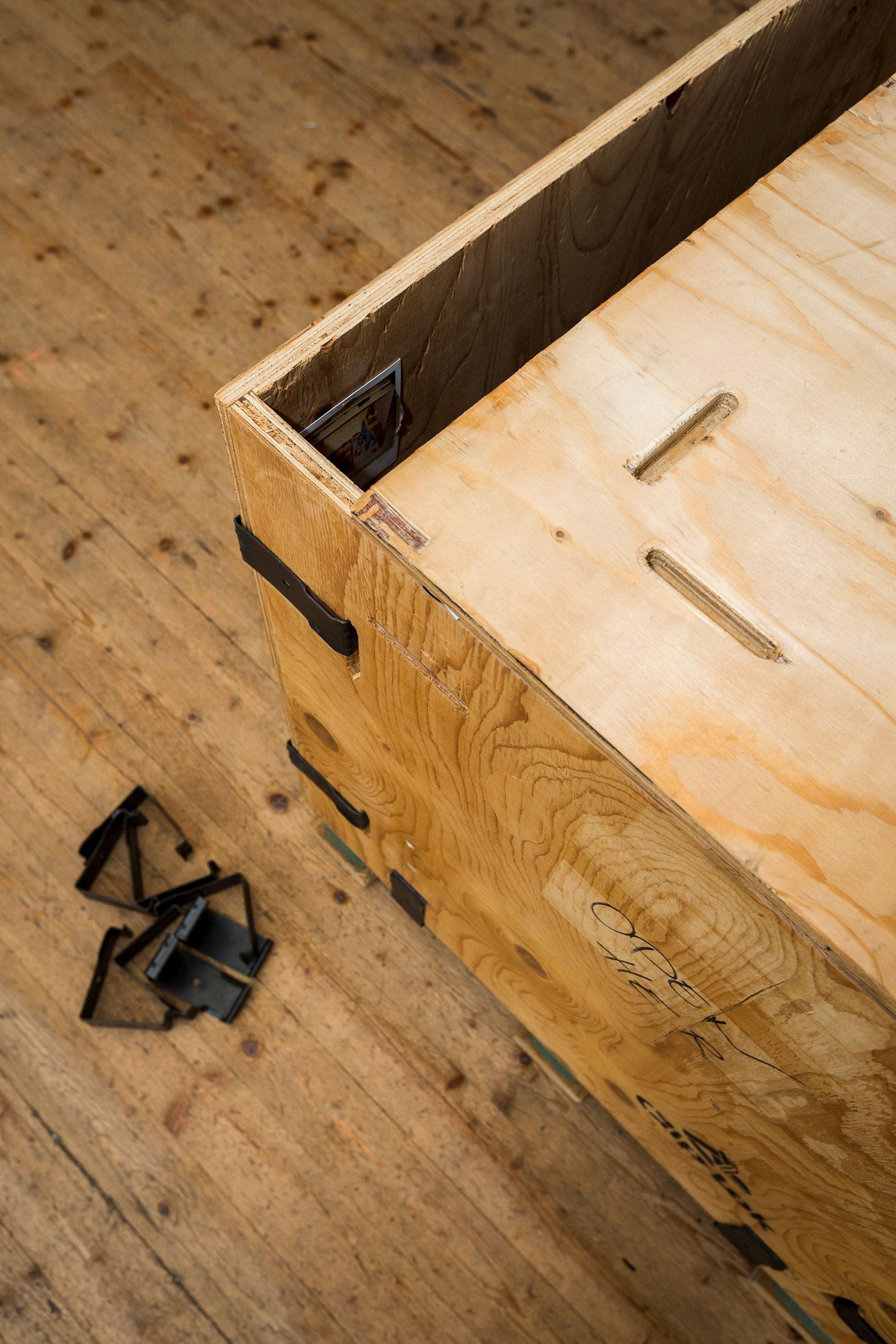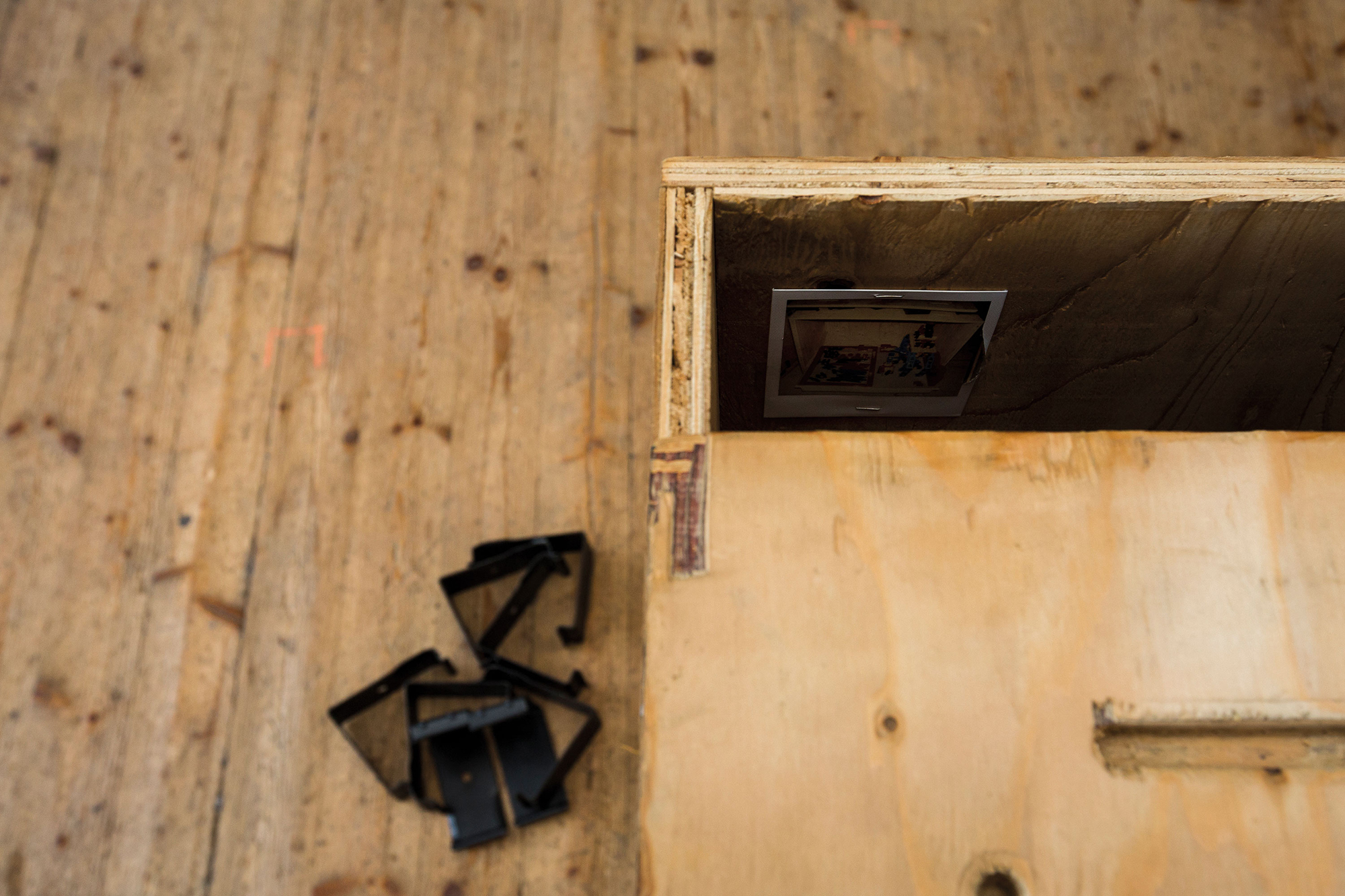


Cargo I deals with the container as an uncanny iconography of capitalism. Its shape isn’t based on the content it contains but on standard dimensions that make it compatible with various means of transport. The exterior is indifferent to its content. As an everyday object, we tend to overlook and underestimate it’s often violent physical as well as political meanings. The container chosen for the work Cargo I is by the packaging manufacturer Clip-Lok SimPak. Clip-Lok is a container system that is advertised as a product that can be customized to its cargo in various ways, whether it’s UN dangerous goods, automotive parts, weapons, or toys.
Part of the work is a transducer inside the container. The input signals to the transducer are differently timed envelopes of a 31,32 Hz frequency. This frequency is believed to cause the release of growth hormones in living organisms. Since the signal has to use the container as a membrane it changes its frequency, it’s cargo indeterminable depending on where it’s placed. The container unloads what it contains, but not at the same extent. It’s constantly strained by the cargo of the Schumann frequency inside, causing the container to resonate in physical reaction to its capacity.
[please mind to wear headphones with a wide frequency range from 20Hz>]
Cargo I, 2017
plywood, synthetic material, steel
sound 10’ 20’ and 30’ 31,32 Hz
81 × 86 × 76 cm
Picture credits: Heidi Pein